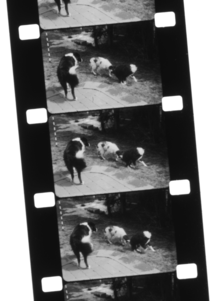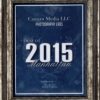Transfer 16mm Movie Film to digital format. (DVD, Blu-Ray, AVI, or any other format)
Canaan Media is a full-service motion picture film laboratory and telecine house, specializing in 8mm, 16mm, super-16 and 35mm services for the film archivist and documentary, student, commercial, and Independent filmmakers.
Available option of scanning solution includes: 4K, 3K, UHD, 2K, HD and SD.
In the process of digitizing old color films by Canaan, even badly faded source material can sometimes be restored to full color through digital techniques that amplify the faded dye colors.
Canaan Media can transfer 16mm movie film in a professional matter, to create a high quality long-term digital archive.
* Please call (908)218-7929 or email to: info@CanaanMedia.com for quotation!
About 16mm Movie Film
Eastman Kodak introduced 16 mm film in 1923 as a less expensive amateur alternative to 35 mm film. During the 1920s, the format was often referred to as sub-standard by the professional industry.
Kodak hired Willard Beech Cook from his 28 mm Pathescope of America company to create the new 16 mm Kodascope Library. In addition to making home movies, people could buy or rent films from the library, a key selling aspect of the format.
Intended for amateur use, 16 mm film was one of the first formats to use acetate safety film as a film base. Kodak never used nitrate film for the format because of the high flammability of the nitrate base. 35 mm nitrate was discontinued in 1952.
Production evolution
The silent 16 mm format was initially aimed at the home enthusiast, but by the 1930s it had begun to make inroads into the educational market. The addition of optical sound tracks and, most notably, Kodachrome in 1935, gave an enormous boost to the 16 mm market. Used extensively in WW2, there was a huge expansion of 16 mm professional filmmaking in the post-war years. Films for government, business, medical and industrial clients created a large network of 16 mm professional filmmakers and related service industries in the 1950s and 1960s. The advent of television production also enhanced the use of 16 mm film, initially for its advantage of cost and portability over 35 mm. At first used as a news-gathering format, the 16 mm format was also used to create television programming shot outside the confines of the more rigid television studio production sets. The home movie market gradually switched to the even less expensive 8 mm film and Super 8 mm format.
16 mm has been extensively used for television production with light cameras in many countries before portable video cameras appeared. Replacing analog video devices, digital video has made significant inroads in television production use. Nevertheless, 16 mm is still in use in its Super 16 ratio for low cost productions.
Color fading of old film and color recovery
Over time, the cyan, magenta and yellow dyes that form the image in color 16 mm film inevitably fade. The rate of deterioration depends on storage conditions and the film type. In the case of Kodachrome amateur and documentary films and Technicolor IB (imbibition process) color prints, the dyes are so stable and the deterioration so slow that even prints now over 70 years old typically show no obvious problems.
Unfortunately, dyes in the far more common Eastmancolor print film and similar products from other manufacturers are notoriously unstable. Prior to the introduction of a longer-lasting “low fade” type in 1979, Eastmancolor prints routinely suffered from easily seen color shift and fading within ten years. The dyes degrade at different rates, with magenta being the longest-lasting, eventually resulting in a pale reddish image with little if any other color discernible.
In the process of digitizing old color films by Canaan, even badly faded source material can sometimes be restored to full color through digital techniques that amplify the faded dye colors.
* Please call (908)218-7929 or email to: info@CanaanMedia.com for quotation!




